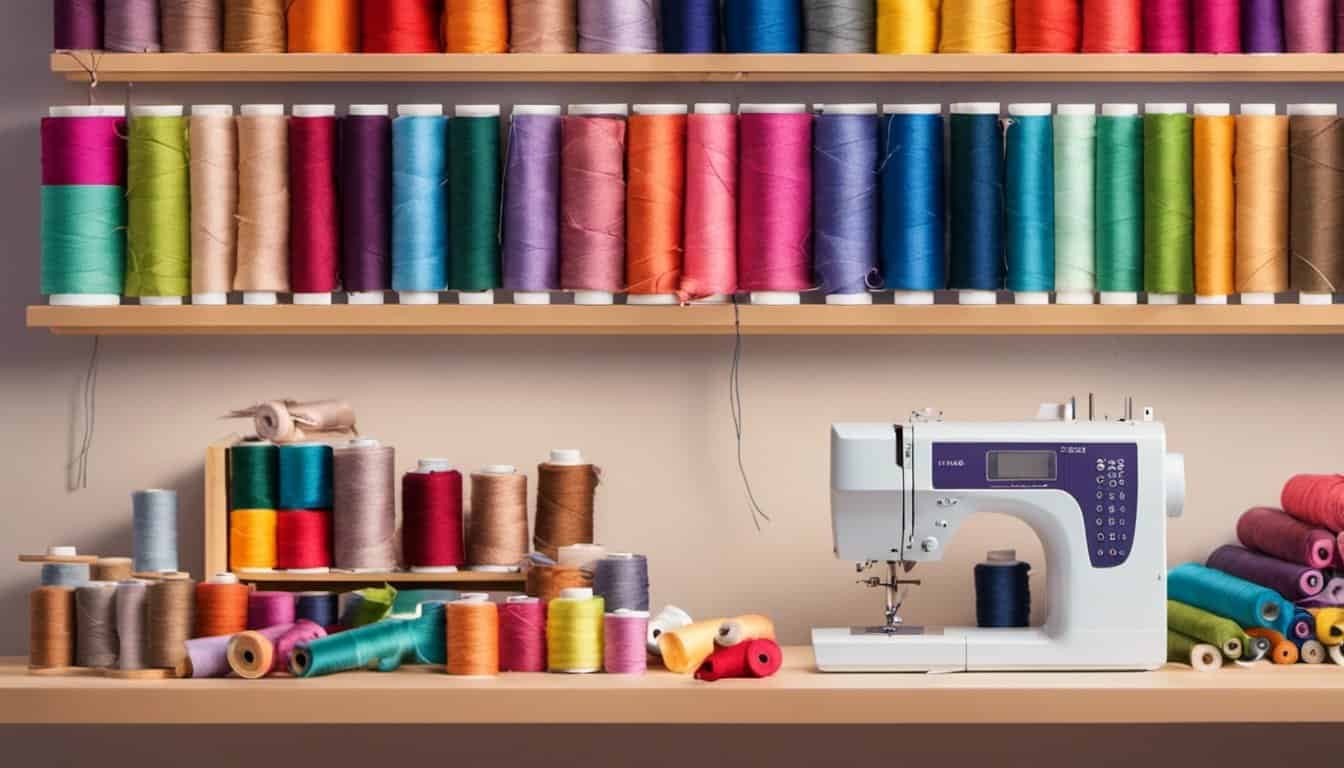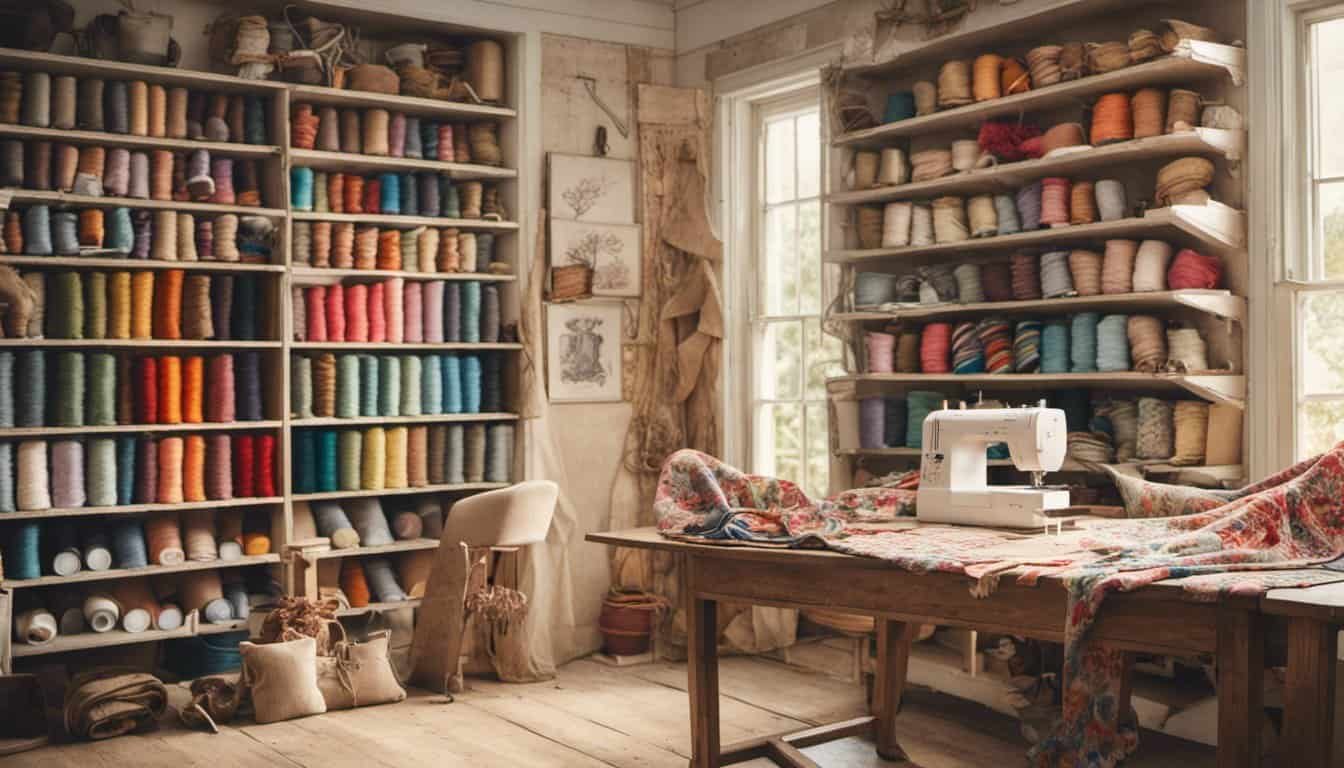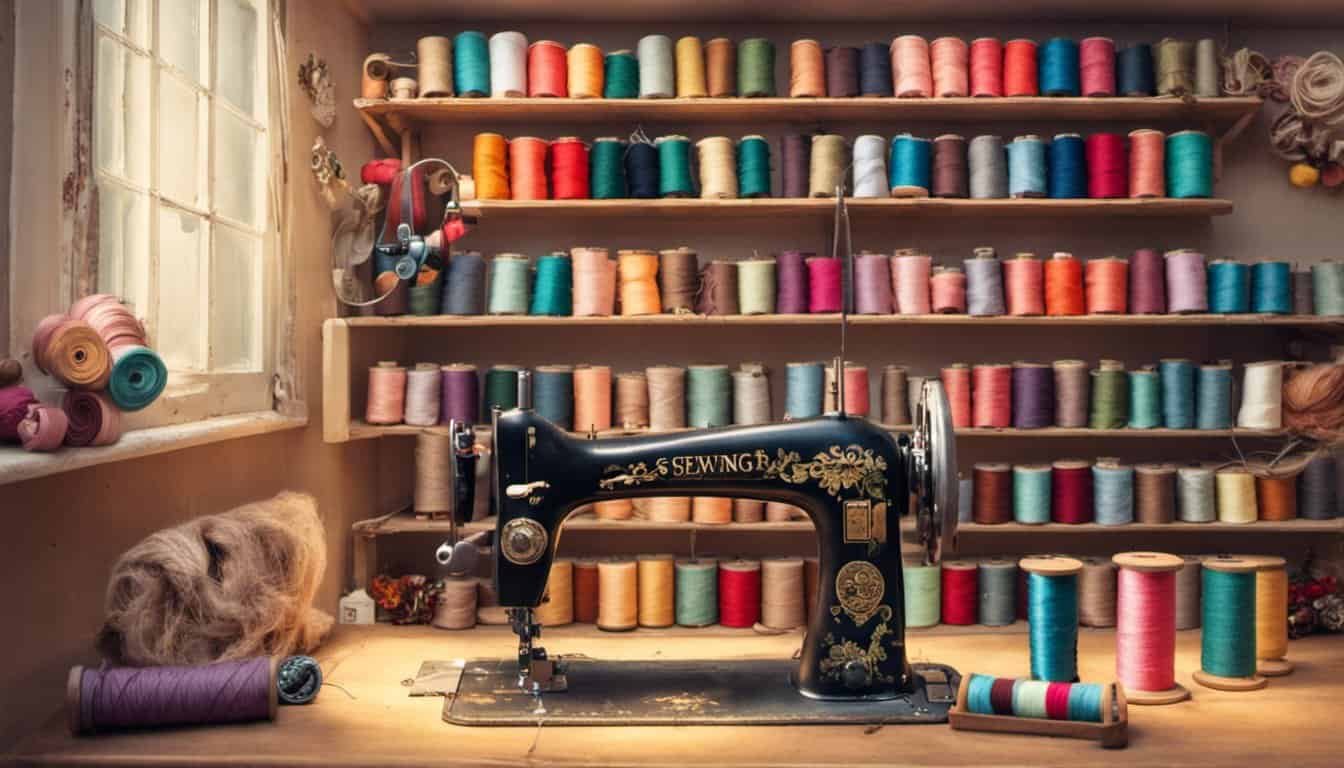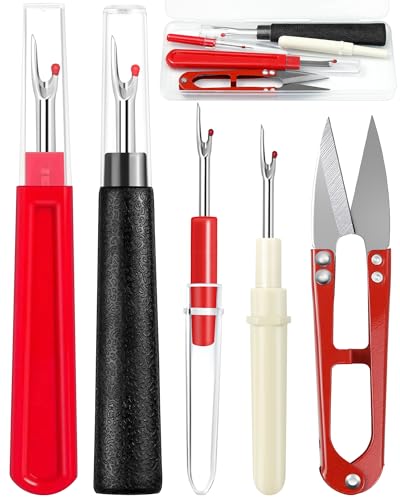Are you curious about stick and poke tattoos? Wondering if sewing needles can be used for this DIY tattooing method? Well, you’ve come to the right place! In this article, we’ll explore whether sewing needles are suitable for stick and poke tattoos. Stick and poke tattoos have gained popularity in recent years as an alternative to professional tattoos. Many people are drawn to the simplicity and affordability of this method. So, let’s dive in and find out if sewing needles are up to the task!
Have you ever wondered if you can use sewing needles for stick and poke tattoos? Stick and poke tattoos have become increasingly popular as a DIY tattooing method. They offer a unique and personal touch to body art. But can sewing needles really do the job? In this article, we’ll explore whether sewing needles are suitable for stick and poke tattoos. So, if you’re considering trying your hand at stick and poke, keep reading to find out if sewing needles are a good choice!
Benefits of Stick and Poke Tattoos
Stick and poke tattoos have gained popularity in recent years as a DIY tattooing method. If you’re considering trying this technique, you might be wondering if sewing needles can be used for stick and poke tattoos. Let’s explore the benefits of stick and poke tattoos and see if sewing needles are suitable for this method.
1. Accessibility: One of the main advantages of stick and poke tattoos is their accessibility. Unlike professional tattooing, stick and poke tattoos can be done at home or in a casual setting. You don’t need specialized tattoo equipment or expensive needles. Sewing needles, which can be found in many households, can be used for stick and poke tattoos, making the process more accessible to those who want to experiment with self-expression.
2. Customization: Stick and poke tattoos offer a unique and personalized touch to your body art. With sewing needles, you have more control over the design and the ability to create intricate details. This customization allows you to express your creativity and create a tattoo that is truly one-of-a-kind.
3. Minimal equipment: Unlike professional tattooing, stick and poke tattoos require minimal equipment. Sewing needles, ink, and a clean work surface are the basic tools needed. This simplicity makes stick and poke tattoos a convenient option for those who want to try tattooing without investing in expensive equipment.
4. Lower risk of infection: Stick and poke tattoos, when done correctly, can be safer than using a tattoo gun. Sewing needles, if properly sterilized and handled, can minimize the risk of infection. However, it is crucial to follow proper hygiene practices, such as using disposable gloves, sanitizing the needle, and cleaning the area before and after tattooing, to ensure safety.
While sewing needles can be used for stick and poke tattoos, it’s essential to note that safety should always be a top priority. If you decide to try this technique, educate yourself on proper sterilization and hygiene practices to minimize the risk of complications.
Stick and poke tattoos offer accessibility, customization, and a lower risk of infection. Sewing needles can be used for this method, making stick and poke tattoos a DIY option for expressing your creativity through body art. Remember to prioritize safety and hygiene to ensure a positive tattooing experience.
Understanding the Stick and Poke Technique
If you’re considering trying out the stick and poke tattoo method, you might be wondering if sewing needles are suitable for this technique. Well, as an expert in all things sewing, embroidery, knitting, and crafts in general, let me tell you that sewing needles can indeed work for stick and poke tattoos!
The stick and poke technique involves manually poking ink into the skin using a needle. While professional tattoo artists typically use tattoo machines, stick and poke tattoos offer a more DIY approach. And yes, sewing needles can be an excellent tool for this creative venture. Here’s why:
- Accessibility: Sewing needles are readily available and can be found in most households or easily purchased from a craft store. This accessibility makes stick and poke tattoos an attractive option for those wanting to try out this unique form of self-expression.
- Customization: With sewing needles, you have the freedom to create intricate and personalized designs. The fine tip of a sewing needle allows for precise lines and intricate details, enabling you to bring your artistic vision to life.
- Minimal Equipment Requirements: Unlike tattoo machines that require multiple parts and power sources, stick and poke tattoos only require a sewing needle, tattoo ink, and some thread or cotton balls. This simplicity makes the stick and poke technique more accessible and budget-friendly.
- Lower Risk of Infection: With proper safety precautions, stick and poke tattoos can be a safe and hygienic process. Make sure to sterilize the sewing needle before each use, use disposable gloves, and properly clean and care for your tattoo site after the process.
Are Sewing Needles Safe for Stick and Poke?
Now that we’ve explored the benefits of stick and poke tattoos, let’s discuss a crucial aspect: safety. Using sewing needles for stick and poke tattoos can be a safe option if you follow the right precautions. As an expert in all things sewing, embroidery, knitting, and crafts in general, I’m here to guide you through the ins and outs of using sewing needles for stick and poke tattoos.
When it comes to safety, it’s essential to remember that sterilization is key. Before attempting a stick and poke tattoo with a sewing needle, make sure you thoroughly clean it. You can do this by soaking the needle in rubbing alcohol or boiling it in water for about 10 minutes. Additionally, always use a fresh needle for each tattoo to prevent the risk of infection.
Another aspect to consider is the needle size. Sewing needles come in various sizes, and the one you choose depends on the intricacy of your design and personal preference. Thinner needles, such as size 7 or 8, work well for fine lines, while thicker needles, like size 10 or 12, are better suited for bolder lines. Remember, it’s important to be comfortable and confident with the needle size you choose.

It’s also worth mentioning the importance of proper technique. When using a sewing needle for stick and poke tattoos, never force the needle into the skin. Instead, apply gentle pressure and allow the needle to glide smoothly. This will help minimize discomfort and reduce the chance of injury.
Lastly, hygiene cannot be stressed enough. Wash your hands thoroughly with warm water and soap before starting the tattooing process. Also, ensure the area you’ll be tattooing is clean and disinfected. After completing the tattoo, clean the area with mild soap and warm water, then apply a thin layer of tattoo aftercare ointment to promote healing.
Remember, stick and poke tattoos can be a fun and creative way to express yourself, but safety should always be your top priority. By following proper sterilization protocols, selecting the right needle size, using proper technique, and maintaining good hygiene, you can safely create beautiful stick and poke tattoos using sewing needles.
Proper Sterilization Techniques for Sewing Needles
When it comes to stick and poke tattoos, safety should always be a top priority. One of the most crucial steps in maintaining a safe tattooing process is proper sterilization of your tools, including sewing needles. As an expert in all things sewing, embroidery, knitting, and crafts in general, I’ll guide you through the essential sterilization techniques for your sewing needles.
Why is sterilization important?
« Discover the Ultimate Secret to Choosing the Perfect Sewing Machine Needle for Flawless Results
10 Game-Changing Hacks to Fix Sewing Machine Stitch Issues – Seamstresses Can’t Believe 7 »
Sterilization is vital to prevent the risk of infection. Sewing needles can harbor bacteria and other contaminants, which can lead to serious health issues if not properly addressed. By following these simple sterilization techniques, you can ensure the safety and well-being of both yourself and anyone receiving a stick and poke tattoo.
Method 1: Boiling
Boiling is one of the most effective ways to sterilize your sewing needles. Here’s how you can do it:
- Place a small pot of water on the stove and bring it to a rolling boil.
- Carefully drop your sewing needles into the boiling water.
- Let them boil for at least 10 minutes to ensure thorough sterilization.
- Use tongs to remove the needles from the water and place them on a clean towel to cool and dry.
Method 2: Alcohol Solution
Another great method for sterilizing your sewing needles is using an alcohol solution. Here’s what you need to do:

- Fill a small container with rubbing alcohol or a sterilizing solution specifically designed for tattoos.
- Immerse your sewing needles in the solution for about 10 minutes.
- Use clean tongs or tweezers to remove the needles from the solution and let them air dry on a clean towel.
Remember, proper sterilization is key to keeping your stick and poke tattoos safe and infection-free. Using a clean and sterile sewing needle for each tattoo is essential. Additionally, always make sure to clean your work surface, hands, and any other tools involved in the process to maintain hygiene.
Risks and Potential Complications of Stick and Poke Tattoos
Stick and poke tattoos are a creative way to express yourself through body art using sewing needles. While this method offers accessibility and customization, it’s important to be aware of the potential risks and complications that may arise. Here are a few things to consider:
Increased Risk of Infection:
Using sewing needles for stick and poke tattoos can carry a higher risk of infection if proper sterilization techniques are not followed diligently. Since sewing needles are not specifically designed for tattooing, they may have residue or contaminants on them that can introduce harmful bacteria into your skin. Infections can lead to swelling, redness, pain, and in severe cases, even abscesses. So, it’s crucial to prioritize cleanliness and sterilization.
Allergic Reactions:
Some individuals may be allergic to the ink used in stick and poke tattoos, especially if it’s not specifically formulated for tattoos. Allergic reactions can manifest as itching, rash, or even blistering. It’s essential to test the ink on a small area of your skin first and wait for any adverse reactions before proceeding with the tattoo.
Uneven Results:
Since stick and poke tattoos are done manually, with each poke creating a dot of ink, it can be challenging to achieve consistent and uniform results. This can lead to uneven lines, patchy color, or even unintended smudging of the design. It’s crucial to have steady hands and practice on non-sensitive areas before attempting a stick and poke tattoo on a more visible part of your body.

Fading and Blurring Over Time:
Stick and poke tattoos may not have the same longevity as professional tattoos. The ink used and the absence of a machine’s precision can contribute to the tattoo fading and blurring over time. It’s essential to be prepared for touch-ups or potential fading and take proper care of your tattoo to prolong its lifespan.
Remember, stick and poke tattoos can be a fun and creative way to express yourself, but it’s crucial to be mindful of the potential risks involved. If you decide to proceed with this DIY method, prioritize safety, hygiene, and proper sterilization techniques to minimize any complications and ensure a positive experience.
Conclusion
Remember, when it comes to stick and poke tattoos, safety should always be your top priority. While sewing needles may seem like a convenient option, it’s crucial to be aware of the potential risks involved. This article has highlighted the increased risk of infection, the importance of proper sterilization techniques, and the possibility of allergic reactions, uneven results, and fading over time.
To ensure a safe and successful stick and poke tattoo experience, always prioritize hygiene and proper sterilization techniques. Consider using professional tattoo needles that are specifically designed for this purpose. These needles are sterile, have a consistent size and shape, and are less likely to cause complications.
Remember, if you’re unsure about the process or have any concerns, it’s always best to consult a professional tattoo artist. They have the knowledge and experience to create beautiful and safe tattoos. So, stay informed, be cautious, and enjoy the art of stick and poke tattoos responsibly!















